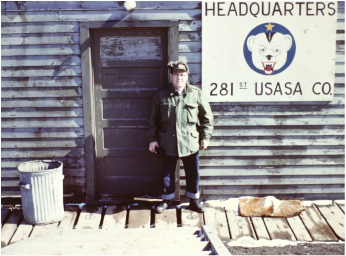It's Research Pride Month! During Research Pride Month, I often chuckle at how I fell into this profession. It’s not something that we study in school like accounting. But a recent event reminded me that, when I did fall into Prospect Research, it was inevitable. And I’ve been thrilled ever since.
1 Comment
With Worksheets and Suggestions for Cost Cutting that Will Better Support Fundraising  During the 2008 economic crash, my employer had to lay of 10% of the Advancement Office. We just had to. I had to choose to lay people off. It was miserable. What it taught me, though, is that management is just as confused and frustrated as staff are when it comes to figuring out what budgets and whose jobs to cut. Of course, we are going to advocate for leaving Prospect Research intact because that is where we come from. However, you can back up these assertions for your own shop by using data. Let’s begin.  By - Drew Page at Siege Media Nonprofits can learn a lot about technology, operations, and more from companies in the for-profit sector. One technology that has been gaining popularity among c-level executives is machine learning and its contributions to modern Artificial Intelligence (AI). Since true AI — the ability for computers to process unstructured data, form conclusions, and take action — is not yet on the horizon of possibilities, machine learning models have become synonymous with AI. Celebrating Prospect Research Pride Month  The Information Age - a time when we all have access to the Internet and we can enjoy all kinds of possibilities, like posting silly pet videos or watching TV on our phones. As prospect researchers, we are early leaders in the Information Age, and we are still leading in acquiring, assembling, and interpreting information.
 By Greg Duke In my previous blog post, I warned that the United Kingdom Information Commissioners’ Office (UK ICO) might be preparing to take a hard line on companies which fail to protect their customers’ personal data under GDPR regulations. On July 9, 2019, the UK ICO followed through on the threat in dramatic fashion. The Office fined British Airways £183 million ($228.3 million) for a breach which exposed 500,000 customers’ personal data and credit card details to a criminal hack; and, the Office announced plans to fine Marriott Corporation—a US-based company—£99.2 million ($123.8 million) for exposing the personal details of 339 million of its customers to third parties.  This time of year, many nonprofits are counting up the last of June’s gifts and trying to get to a total that meets their fundraising goals. When the reports come out, most fundraisers will start the new year again – at $0.00 – without thinking about how last year went, why it went that way, and how it can be better. It can always be better. Here are some ideas for looking backward, even if only briefly, to fine tune your new fundraising year.  By Greg Duke Nearly a year ago, many nonprofit organizations in the United States were scrambling to meet the GDPR (General Data Protection Regulation) implementation deadline of May 25, 2018. Last spring, when I spoke with several advancement services and prospect research professionals in the US, there was a great deal of confusion about what GDPR would mean to their fundraising activities across the Atlantic. The great hope was that, in due time, a lot of this confusion would be resolved by further instructions from the European Union, which would clarify the rules fundraising institutions have to follow. Unfortunately, during this time, little has been decided about the future of data protection regulations and what those regulations mean with regards to fundraising institutions in the US.
By - Greg Duke During this time of year, many Directors of Advancement Services start to make plans about what their offices are hoping to get done next year. If you’re in charge of maintaining a nonprofit database, one of those plans should be to clean up and improve the data about your prospects and donors. Even the best-maintained database may have problems: incorrect data, data in the wrong places, fields that need to be cleaned up, or segments in the database that need to be repaired. Yet there never seems to be enough time to allocate toward fixing the problems. And it only seems that there is enough inclination when something important like a database conversion is about to happen.
 While driving home from Apra Prospect Development, I listened to this TED talk. The article brought my mind back to some work I’m doing on estimating the number of gift officers needed to meet a campaign goal. For analytics projects like this, I use the traditional prospect count – 150. However, I have wondered if that portfolio size is just an inherited paradigm. The TED podcast gave some insight by introducing me to Dunbar’s Number. Driving Brand Awareness - What Nonprofit Marketers Can Learn from Their For-Profit Counterparts5/17/2018 Co-author - Gary Robinson, COO of Lityx  All businesses are unique, and each requires its own blend of strategic and operational competencies in order to be successful. However, every organization, regardless of industry, competitive, or environmental factors, has common basic needs. At its core, an organization cannot exist without the following:
Nonprofits tend to think of this list as these three things:
Is there anything that these two approaches can teach each other? If nonprofits were “run like a real business,” as we often snip in our office hallways, what would feel different? This article takes a look. By - Greg Duke  Many of you in the nonprofit world have heard about GDPR (the General Data Protection Regulation) and its consequences for the protection of data for individuals in the European Union and the United Kingdom. There have been a lot of rumors and stories involving the consequences for American nonprofits which fail to protect their European-based alumni or donor constituents. In this article, I will demystify GDPR and help point American database managers and others involved in the maintenance of data in the right direction to follow European and UK law. A celebration of Research Pride MonthA couple of years ago, I shared the story of how my father was a spy during the Cold War. Well, he was actually part of the Army’s Signal Corps, and his job was to supervise and train soldiers who listened to the Russians, the Chinese, and others. As a researcher whose job is to analyze data to guess at the minds and hearts of prospective donors, I have fond memories of both using my father’s stories for my own work and of trying to explain to him what I do for a living. He was always befuddled.
His legacy didn’t stop with me. “I need to write our case for support,” said my friend who I ran into at Fundraising Day New York. My immediate suggestion was to identify those words and phrases that would resonate best with his audience. In other words, I wanted to reach through his organization’s social media accounts to find what words and phrases got the largest number of positive reactions (such as “likes” on the organization’s Facebook posts). And so we launched a project, borrowing the web sites of two of our small business friends: Gabriel Colella, a transformational teacher; and Snug Planet, an environmental services company.
By Greg Duke  Graduation season is upon us once more! As college graduates celebrate, advancement services staff all over the country are getting anxious requests from development staff about how long it will take them to get their new alumni into their Raiser’s Edge database. Here are three strategic tips, from my experience in working in advancement services and on Raiser’s Edge, which will help you get new alumni ready for contact. A Celebration of Research Pride Month  Yes, I am of the age where I want to sit around telling “In MY day…” stories. But today is still my day because I get to share this amazing profession with you. And this blog post is a rampage of appreciation over how far along we’ve come. In 1988, I would have to leave my building to go crawl around the basement of the Harvard Business School to look at dusty old copies of the Standard and Poor’s Business Directory to find out how long my prospect had been executive vice president of his company. It was there that I realized that the president of the company had the same last name of my prospect’s wife’s maiden name, and so I had to go to the Personal Name Index to the New York Times, upstairs, to find their wedding announcement and find out if he married the boss’s daughter. And he had.  When we think of the science of analytics, we consider it as a part of mathematics. And math is a set of instructions, even more than science. For instance, it doesn’t matter how you set up your equation, 3 + 3 + 5 = 11. Set differently, the equation would still be: 5 + 3 + 3 = 11. And: 3 + 5 + 3 = 11.  This past summer, I attended the APRA International Conference in Nashville. This 4-day conference centers on analytics, prospect development, and prospect research. To the credit of the organizers, a record 2,000 professionals attended. I was inspired by the melee to write this blog post. Attending conferences is sometimes thought of as a perk. After all, what productivity happens there besides drinking and picking up tchotchkes? And there is travel, hotel rooms, and meals that the organization pays for. Those of us who are not on the front line of fundraising have an additional challenge for conferences; we are not the holders of the purse strings and so we have to argue for conference dollars. So why go to – and send your staff to – conferences on a regular basis? I have recently returned from an AFP Central New York luncheon, hearing a talk given by Bill Abrams (of Infinize), and my mind can’t stop spinning about what Bill said. Let me share with you a boiled down version of his message:
I interrupted Bill’s presentation to ask, “So, where will organizations’ major gifts prospects come from, then?” Bill answered that my local auto mechanic is much more likely to have as much income and wealth in the future as my banker does now – the Millionaire Next Door idea but cranked up several hundred RPMs.
And that’s when I started trembling, because now the number of prospects that my clients need to cultivate through personalized, special attention has gone from the top 5% of their constituency to – well – everyone. And I imagined major gifts programs melting down into a huge, stratified, boundless annual giving program. This article shares my subsequent research along with some of Bill’s ideas to illustrate where this vision comes from.  In a world where wealth now includes mining rights, fracking revenue, and other intangible assets like patents, copyrights, and trademarks, it can be confusing to figure out whether some assets add value to a prospect’s capacity rating. Here, we'll explore the intrinsic value of patents and how to include them in a prospect’s profile.  Dad at his office, c. 1959 Dad at his office, c. 1959 In 1959, my father sat in the cold metal hut buried halfway into the ground of Shemya Island, a remote piece of land that sits near the very end of the tongue full of islands that make up the western edge of Alaska. It’s no surprise that some of his photos from that island have Russian fishermen in them. My father was an electronic spy some 20 years or so before electronics was a thing.  When starting a data mining project, we are often challenged by our management to “go do some data mining.” We can get stuck from there, unless the tool that we’ll use has already been chosen, like a screening service or modeling vendor. Even then, making sure that we understand the question involved helps frame how we set up the study and then what we do with the results. |
Keep Informed
|
Photos from jeffdjevdet, SMPAGWU









